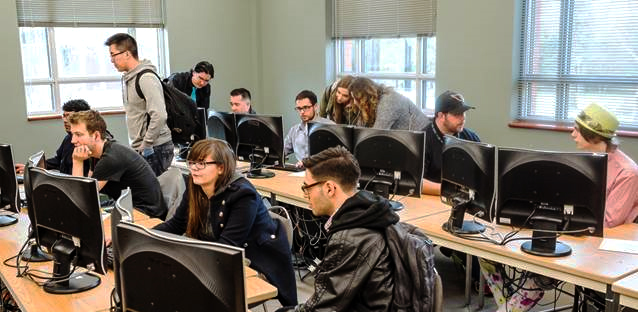
There aren’t many industries more multidisciplinary than video game creation. Musicians, artists, programmers, animators, writers, and people from pretty much every other skill set work together to develop games.
With that many different types of people and personalities in play, you’ve really got to be able to share your toys and play nice. This is why BioWare is such a big supporter of the University of Alberta’s CMPUT 250 course, which takes students from every faculty and teaches them how to work together.

The course on computers and games requires students to take a game from concept to release in four months. Each team includes a writer, musician, artist, and three programmers. Vadim Bulitko, who teaches the course, chooses each term’s students from a stack of applications to ensure an even distribution from the different disciplines.
“The greatest thing they learn in this course is how to work in an interdisciplinary team,” Bulitko says. “Now days, a lot of projects are interdisciplinary, and wherever you are, you’ll be working with people of different backgrounds and educations. Being able to work and be successful in that kind of environment is a great asset.”
Each year, the university hosts an award ceremony for the games the teams make, celebrating excellence in art and design, writing, audio, and technical achievements, as well as a Game of the Year.
The overall winner this year was a stealth-action game called The Day I Died, where players must use both corporeal and spiritual forms in tandem to solve puzzles and escape purgatory.

“The games I’ve seen are very diverse: everything from first-person combat to stealth and logic puzzles,” Bulitko says. “Because there’s no commercial aspect, the exploration costs are very low, so they can just explore what they think is artistically and creatively interesting.”